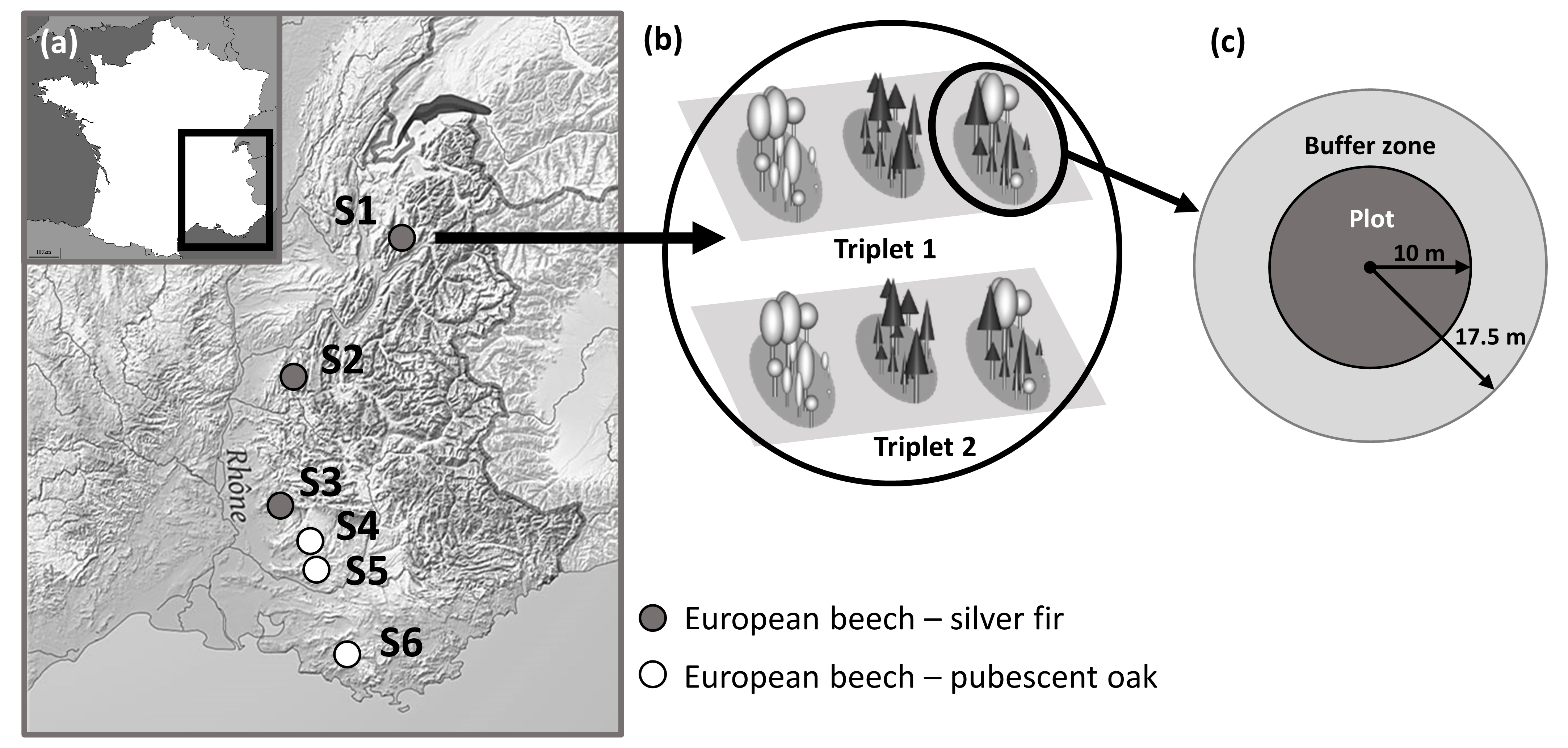In the context of climate change, it remains unclear whether mixed-species forests will help mitigate the impacts of future droughts and, if so, through which processes. As European beech (Fagus sylvatica L.) is one of the major European species, it is crucial to evaluate its response to drought when mixed with species with contrasted functional traits and in contrasted climatic conditions, particularly at the limit of its climatic range.
In a recent paper entitled “Mixing beech with fir or pubescent oak does not help mitigate drought exposure at the limit of its climatic range” published in Forest Ecology & Management, Soline Martin-Blangy and her collaborators (UMR Silva, UMR ISPA, UMR Biogeco, UMR CEFE) aimed to (i) characterize the effects of tree species interactions on the drought exposure of beech in south-eastern France, and (ii) determine whether belowground water uptake complementarity underlies these effects.
They focused on beech-silver fir (Abies alba Mill.) and beech-pubescent oak (Quercus pubescens Willd.) forests across six sites in the French pre-Alps, a region at the limit of the climatic range for beech. They used a triplet approach to compare the tree-ring carbon isotope composition (δ13C) of these species in pure and two-species mixed stands during a period of dry years, and used water hydrogen isotope composition (δ2H) in the xylem to identify water uptake sources. Overall, they found no clear mixture effect pattern on beech physiological functioning among sites and triplets. In beech-fir sites, mixing beech with fir had no effect on beech δ13C values during dry years. In beech-oak sites, mixture effects on beech were mostly neutral, although sometimes beech suffered from a stronger exposure to drought in mixed stands.
This study emphasizes the impact of the tree sampling design on the outcome of studies on forest biodiversity-ecosystem functioning relationships. Limiting tree sampling to dominant trees when analyzing stand-level relationships may bias these outcomes. The authors evidenced differences in water uptake sources between beech and fir, but not between beech and oak during a dry summer. However, these patterns did not help explain the lack of species mixture effects, or existence thereof, at the triplet scale. This study demonstrates that managing beech in mixed stands with silver fir or pubescent oak at the limit of beech climatic range does not buffer drought impacts on beech during dry years. In the long term, with more frequent extreme droughts, promoting beech-fir mixtures will not be detrimental to beech drought response, while beech may suffer in mixtures with pubescent oak.




